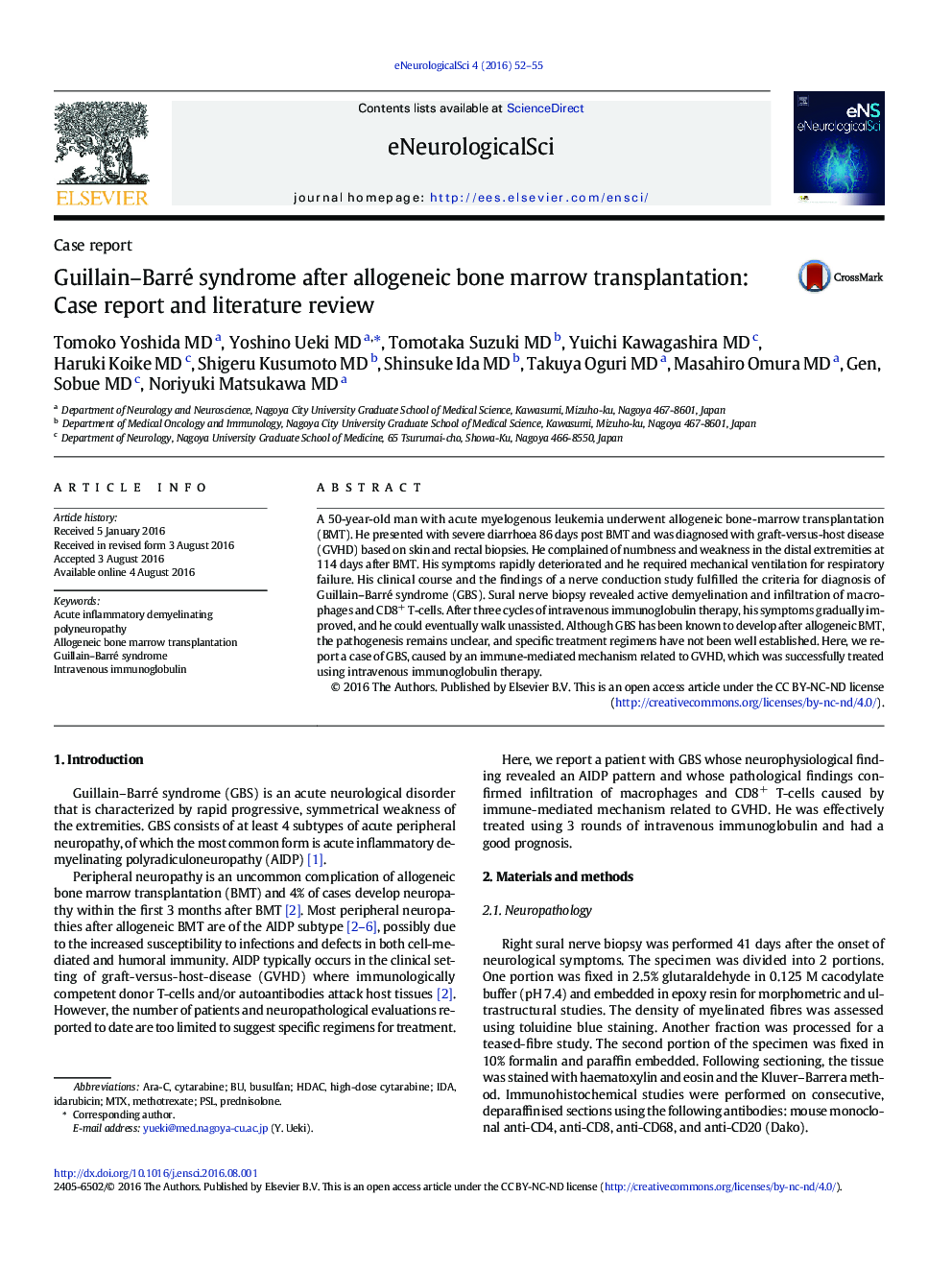| Article ID | Journal | Published Year | Pages | File Type |
|---|---|---|---|---|
| 3049540 | eNeurologicalSci | 2016 | 4 Pages |
•AIDP occurs in the clinical setting of graft-versus-host-disease.•Pathological findings confirmed the infiltration of macrophages and CD8+ T cells.•Three rounds of intravenous immunoglobulin yielded a good prognosis.
A 50-year-old man with acute myelogenous leukemia underwent allogeneic bone-marrow transplantation (BMT). He presented with severe diarrhoea 86 days post BMT and was diagnosed with graft-versus-host disease (GVHD) based on skin and rectal biopsies. He complained of numbness and weakness in the distal extremities at 114 days after BMT. His symptoms rapidly deteriorated and he required mechanical ventilation for respiratory failure. His clinical course and the findings of a nerve conduction study fulfilled the criteria for diagnosis of Guillain–Barré syndrome (GBS). Sural nerve biopsy revealed active demyelination and infiltration of macrophages and CD8+ T-cells. After three cycles of intravenous immunoglobulin therapy, his symptoms gradually improved, and he could eventually walk unassisted. Although GBS has been known to develop after allogeneic BMT, the pathogenesis remains unclear, and specific treatment regimens have not been well established. Here, we report a case of GBS, caused by an immune-mediated mechanism related to GVHD, which was successfully treated using intravenous immunoglobulin therapy.
